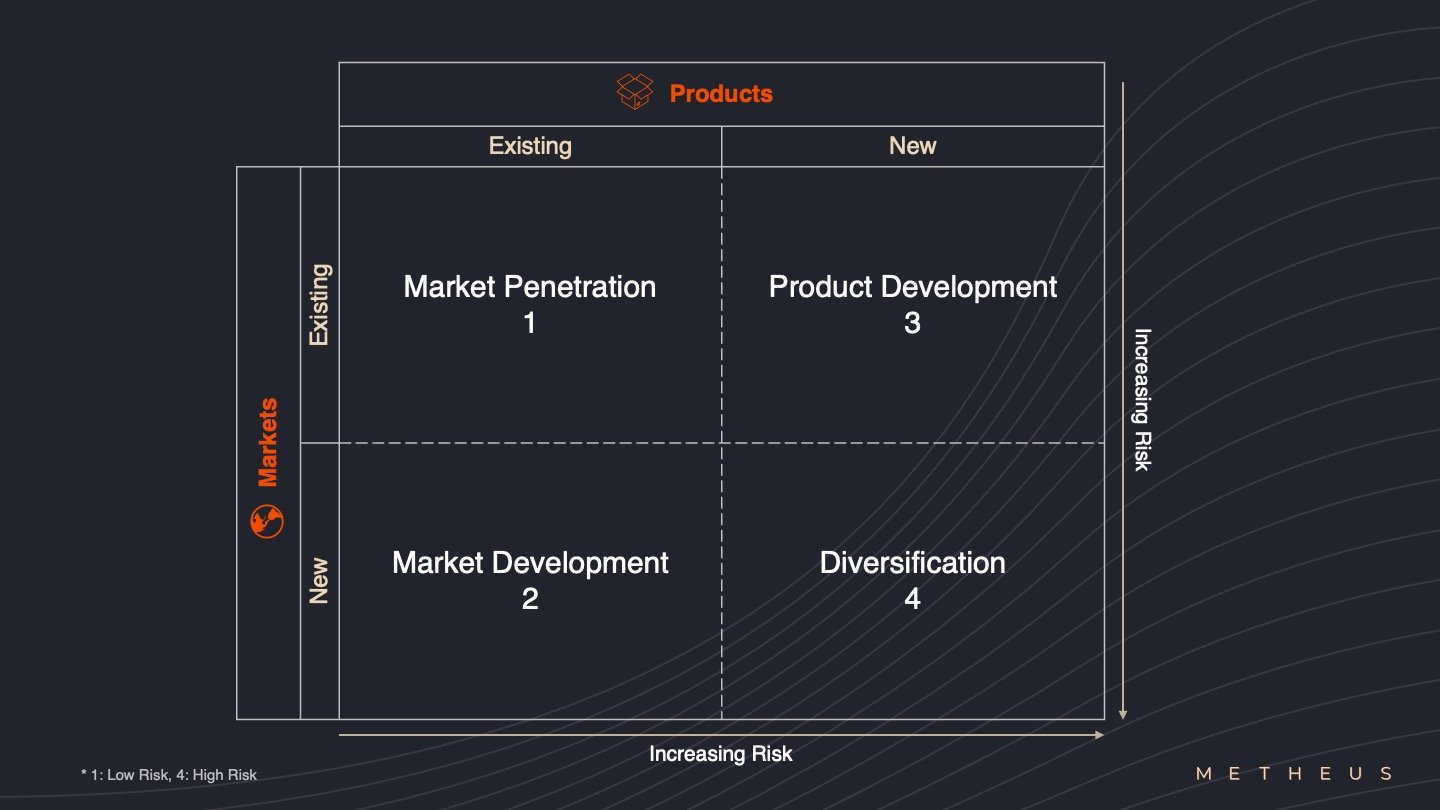Market Expansion Strategy: Are You Ready and What You Need to Know

The past three years have been marked by significant upheaval and change in the world. From March 2020 to June 2021, the majority of businesses were forced to operate solely online. In this period, we also saw increased inflation, the collapse of stock markets, and decreased investments due to precautions taken by countries to combat inflation. These factors have contributed to a new world with a significant shift in the marketplace.
These circumstances led to a significant market change, gave companies a whole new chance of going global via being online but meanwhile, have made it harder for companies to expand into new markets, as resources and investments have become scarce . Therefore, when it comes to market expansion, it is now more crucial than ever to have a successful market expansion strategy for a company. But in this new world with these changes, do you know how ready are you for market expansion?
Expanding into new markets is a crucial step in driving business growth and success. It is essential to understand the importance of market expansion. However, expanding into new markets is not a decision that should be taken lightly. It requires a thorough understanding of the various factors that go into a successful market expansion with a really detailed strategy.
One step that can be taken in order to understand your current situation and probable initiatives to take for expansion is to use Ansoff Matrix. Management teams and the analyst community use the Ansoff Matrix, also known as the Product/Market Expansion Grid, as a two-by-two structure to help plan and assess expansion projects. The tool specifically aids stakeholders in conceptualising the degree of risk connected to various growth strategies.

Having a market expansion requires a market expansion strategy and it is not easy to create a successful market strategy. To understand what should be your steps in order to succeed, let’s look at what are the steps for creating a successful market expansion strategy are:

Alignment of Business Strategy, Objectives and Resources
Any new market expansion initiative requires a significant amount of planning and preparation. One key aspect to consider when planning for market expansion is the alignment of business strategy, objectives, and resources.
Top Management Alignment
Having a strong alignment among the departments and business units within the company is crucial for the success of any market expansion initiative. This includes not only aligning the company's resources and strategy with the market expansion goals, but also ensuring that the company's top management is fully aligned with the process. Having them involved in the process ensures that the market expansion is in the company's overall strategy and goals.
The involvement and support of top management is vital for the success of any market expansion. Top management's alignment with the market expansion process and defined goals ensures that the necessary resources such as money, time and teams are allocated and that the company is fully committed to the expansion. Furthermore, top management can also support on high-level topics if there is any obstacle during the expansion.

Clear and Accurate Objectives
Another important aspect to consider is making sure that the objectives defined for the market expansion are clear and well-defined to follow. Having clear and measurable objectives is crucial for the success of any market expansion initiative. Without clear goals, it becomes difficult for employees, teams, business units and whole company to measure its progress and determine if it is on track to meet its goals. In addition, without clear objectives, it becomes harder for the executives and management to take the specific tactical changes needed to achieve success. Without a clear understanding of what is expected, confusion and misunderstandings can arise, leading to delays, setbacks and even failure in the expansion process.
Clear objectives also provide a way to measure the success of the expansion. By having specific, measurable goals in place, the company can determine if it is making the progress it set out to make and make adjustments as needed. Additionally, clear objectives help to ensure that all stakeholders are on the same page and working towards the same goals.
Allocation of Resources
Last but not least, proper resource allocation, including the use of labor, business supplies, and financial resources, is essential for the expansion's success. Without appropriate resources, the expansion process can fail or be prolonged unnecessarily, which can lead to significant losses in terms of money, time, and energy for the business.
When allocating resources, it's important to consider the specific goals of the expansion and the resources needed to achieve them. This includes identifying which resources are most important and prioritising their allocation accordingly. For example, if the expansion involves setting up a physical presence in a new market, then resources such as money and teams may need to be allocated towards finding and setting up a new location, while if the expansion involves increasing online presence, resources may need to be allocated towards online marketing and website development.
Additionally, it is important to take into account the available resources and budget constraints, and allocate resources accordingly. This means making trade-offs and being strategic about which resources to invest in. For example, if the budget is tight, the company may need to focus on allocating resources towards the most important and critical tasks.
Assessment and Prioritization of the Markets to Expand
When it comes to expanding into new markets, one important step is the assessment and prioritisation of the markets to expand. This involves taking a close look at the potential markets to expand into and determining which one will be the best fit for your company.

Assessing and prioritising potential markets is important because it helps to ensure that the company is making the most strategic and informed decision about where to focus its expansion efforts. By carefully evaluating potential markets and prioritising them based on a variety of factors, the company can better understand which markets are most likely to drive growth and success for the business.
Another reason for prioritising markets is that it helps the company to identify and address any potential challenges or risks associated with expanding into a particular market. By assessing and prioritising potential markets in advance, the company can better anticipate and prepare for any obstacles that may arise during the expansion process. This can help to minimise the risks associated with market expansion and increase the chances of success.
Which country is best for expansion?
To understand which country is best for expansion, there are 4 main categories to consider:
Potential of the market:The potential of the market includes analysing the country's macroeconomic structure, industry's market size in the targeted country, growth rate in recent years and many more details. This can provide insight into the overall economic health of the country and its potential for growth as well as the potential of your industry in that specific country. It's important to look at various metrics to understand the potential of the market in detail. These metrics are specific to every company and industry, for example, for an e-commerce related company GDP, e-commerce market size, digital ad spending are some important metrics for understanding the potential of the market.Additionally, researching the size of your business’ industry in the targeted country, which can include analysing market data, consumer behaviour, and industry trends, can give you a sense of the overall potential for growth and success in the targeted market.

Engagement and influence:When it comes to expanding into new markets, it's important to understand your current customer profile and the targeted market's profile in detail. Understanding the current customer distribution and numbers, can provide an insight on the potential for growth in the targeted market.Additionally, understanding the current customer profile and the lead generation strategy can help to identify potential challenges or opportunities that may arise during the expansion process. Furthermore, understanding the Target Market’s geography, business models, methods of decision, targeted customer profile’s size, location, industry or structure of the organisation in the target market and acquisition plans, can aid the company to identify the most effective strategies for reaching and connecting with potential customers in the targeted market.Another thing to understand in the targeted market is your influence and potential or current engagement. This can include analysing your company's current presence in the market, customer base, and brand awareness. This information can help to identify any potential challenges or opportunities that may arise during the expansion process.
Business environment:This includes analysing factors such as language barriers in business, time zone differences, cost of staff, human capital index, and other factors that can impact the company's ability to conduct business in a particular country. Understanding these factors can help to determine if the country is suitable for the company's way of working.For example, if the targeted country has a different time zone, it might affect the communication and the business hours, and if there is a language barrier, it might affect the communication and the customer service, and if the cost of staff is high, it might affect the company's budget.

Competition:Competition is also a crucial factor to consider when determining which country is best for expansion. Understanding and analysing your current competitors’ steps in a market can help to determine the current need and demand in the market and the extent of existing suppliers. By studying the competition, a business can identify potential opportunities or challenges that may arise during the expansion process.Competitor knowledge gained in this phase helps to take more informed and better decisions in country prioritisation. Additionally, you can identify potential partnership or acquisition opportunities in the targeted market.
Every metric should be evaluated specifically for the company and in detail in order to reach the right answer. As Metheus Consultancy, we have a special decision making intelligence methodology to choose the best country to expand and best market opportunity. We design its metrics specifically for the businesses we are working with and their target countries. If you think that you need help with it, or learn more about it don’t forget to contact us!
Entry Strategy and Initiatives to Start Operations
It is now the time to take action! How ready are you? What are your early market expansion initiatives? Who is your market expansion team? What are your lead generation or customer acquisition tools?
The answers of these questions will guide you to your current situation regarding your entry strategy and initiatives needed to start the expansion.
Deciding on Targeted Segments

After deciding on the market to expand, first step is to looking at buyer segments and define the target audience even in more detail. For entering a new market, market feasibility analysis is a must. Such an analysis should include researching the target market's size and growth potential, as well as analysing the competition and identifying any potential barriers to entry. Other important factors to consider are the target market's buying habits, distribution channels, and the overall economic conditions of the market. To learn more, don't forget to read our “Market Feasibility Analysis for Entering a New Market” article!
Identifying Your Differentiation by Detailed Competitor Analysis
Researching the competition and deciding on which channels to use for business, marketing and sales comes next. As a company expanding into a new market, it is important to research the competition and identify any potential threats or opportunities. This includes understanding the competition's strengths and weaknesses, as well as their pricing strategies and customer base.
When looking over your competition, consider factors such as market share, customer base, and marketing strategies of your competitors. This can give you a sense of the overall level of competition in the targeted market and allow you to identify overlooked opportunities where you can differentiate your product or service offering. Additionally, by knowing your competitors' strengths and weaknesses, a company can develop strategies to gain a competitive advantage in the market.
To learn more about competitors, and competition don’t forget to read our “B2B Technology Market Expansion: Keep An Eye On The Competition” article!
Project Your Accessible Market
Your market entry strategies include your quantitative potential measurement and creating projections about the future. By looking at previous examples within the market or the digital marketing average and trends, you can estimate your lead or customer acquisition funnel numbers, costing structure and conversion rates. These numbers and ratios will not be your final results and will change in time depending on your execution capabilities; but they could be a north star for your implementation.

Take Action and Start Initial Implementation
Lastly, comes the decision of the baby steps and starting the process of trying your strategy. With this, your company can understand if your researches and strategies have a response in the market or not. You will start from the most priority actions and measure your engagement, responses and success through business analytics.
If you need help with your strategy and initiative creation processes, don’t forget that Metheus Consultancy is always here to help! We can guide you through the expansion process, beginning to end!
Engagement, Execution and Optimization
Just as much as the steps you took in this expansion process, your process of checking those steps is important. To be sure that you are ready for expansion, as a company, you need to be sure that you have the right metrics and tools to check every step and monitor if you are reaching your initial objectives or not.
As a result, this part is where business analytics step forth. With the usage of your business’ analytics, here is where you check your success of plans regarding the actions shared on different channels, their feedbacks, positive characteristics of these feedbacks and negative characteristics of these feedbacks. All of these analyses end with a dynamic resource and action plans based on the results. When dynamic organisations encounter with an unwanted result, they will change, so should you.
After catching success on multiple journeys and identified your growth path, it is important to define processes and Standard Operating Procedures (SOP) for your team to multiply and reproduce the results in higher numbers and educate new team members or partners to quicker on your execution strategy.
Meanwhile, knowing your expansion team’s structure, their Standard Operating Procedures in sales and marketing is also very important. Through this, you can be sure if a strategy planned is suitable for your team’s dynamics or not and create a more optimized strategy.
It is very important that you know your team’s structure, their Standard Operating Procedures in sales and marketing and other aspects of the business before venturing into another market. Through this, you can be sure if a strategy planned is suitable for your team’s dynamics or not and create a more optimised strategy.

You know the growth path, obstacles and tactical changes. You need to expand your team based on the skills required in the new market. Supporting the team with relevant trainings or experienced senior additions will fuel them to overcome the challenges ahead. For example, if you want to expand into China but don’t have any Chinese-speaking employees on your team yet, then this would be an issue that needs addressing before going ahead with your expansion plans.
Having an effective SOP system will ensure that there are no gaps between departments during the process of expanding into new markets and that all employees know what their responsibilities are at all times.
Profitability & Expansion
You've become a strong business, been in operation for some time now. But if you want to take things to the next level—and who doesn't?—you need to be ready for your next market expansion.
If you’ve reached the point where you are at a certain size, then you can evaluate which strategies are right, safe or risky for your expansion. To increase the potential of your business, new products or customisations may be a way to use. In order to determine your priorities, using Ansoff Matrix, analyses and discussions are the way.
Moreover, you need to know your up-selling and cross-selling numbers, ratios; your account managers’ relationships with your customers and the audience your account managers are in touch with. With these information you’ll know your availability of up-sell or cross-sell and who to get in touch with what duration. From that stage to forward, sales and marketing teams should work in a harmonic way because their targets, ambitions and actions will be aligned and produce much more effective results.
Where Companies Fail In Their Market Expansion
What if your plans are failing one-by-one or you cannot generate results even though you think you’re implementing the best possible strategy? We searched 30 different companies for the reasons behind failure and came to the conclusion of 3 main reasons:
Companies do not properly understand market dynamics before entering a new market, so they cannot win over their competitors well enough despite their strong skillsets or technologies.
Many companies have failed because they focused on fast execution rather than seeking to learn from their mistakes quickly. They did not put enough emphasis on adapting to new market conditions.
Some companies have certain issues in alignment with their management teams, not allocating enough resources and operational processes, which leads them into unprofitable situation eventually., etc
To to understand what are the reasons in detail and what actions should you take in detail, take a look at our “ Why some companies fail in their market expansion” blog post.
Market Expansion
In conclusion, expanding into new markets is a crucial step in driving business growth and success. However, it is essential to understand the various factors that go into a successful market expansion. To understand how ready you are for market expansion, it's important to take a look at the alignment of business strategy, objectives and resources, assessment and prioritisation of the markets to expand, entry strategy and initiatives to start operations, engagement, execution and optimisation, and profitability & expansion. By understanding these key steps, businesses can make a more informed decision on whether or not to expand into new markets and increase the chances of success.
